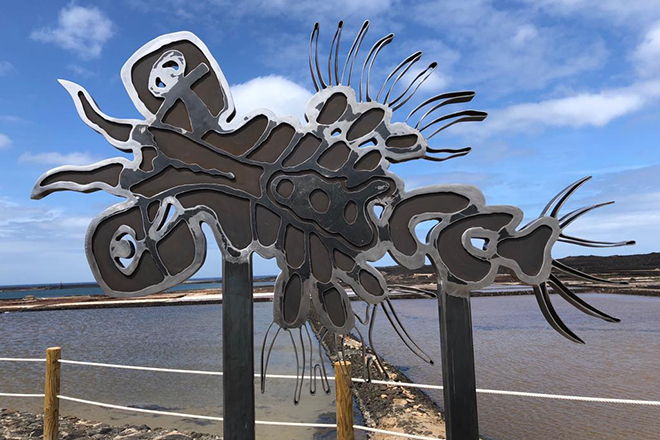In the southwest of the island of Lanzarote, in a sea enclave formed by the 18th century volcanic eruptions, are found the largest operational saltflats in the Canaries.
On the island of a hundred volcanoes, people have not always lived off tourism.
In the first half of the 20th century, the economy revolved around the fishing industry which used salt to preserve fish until the arrival of the first ice factories in the sixties. Lanzarote produced up to 10,000 tons of salt. Now only 2,000 tons.
The Lleó family ran the salt business from its beginnings till the end of the 19th century.
There were around 20 saltflats running simultaneously on Lanzarote only a hundred years ago. In the Canaries there are only 4 left, one of them in Lanzarote.
The men worked on the fishing boats, the women were in charge of working in the saltflats. Depending on the times, there were anywhere from 250 to 400 people working at the Janubio Salt Mines, now there are only 9.
The salt harvesting is still done traditionally by hand, between May and October. The fleur de sel (hand-harvested sea salt) is collected at dawn, very delicately, with a net.

The salt from Janubio is microplastic free.
According to a study by Laboratorios TresA, the salt from Janubio ¨does not contain any microplastics from the families analyzed (polypropylene, high-density polyethylene, low-density polyethylene, PET, nylon).¨
The Janubio lagoon, where the saltflats are found, is of important environmental and scientific interest due to the species that it harbors and the migratory birds that seek refuge there.
For all these reasons, we think it’s essential that these sites remain operational and that’s why they need to be known and protected.
Don’t miss seeing this traditional form of producing salt and tasting this delicacy on our ¨Volcanoes, the Green Lagoon and the Janubio Saltflats¨ route.



Comment (0)